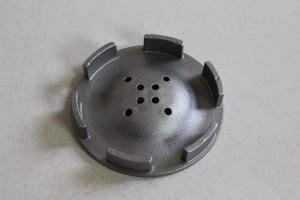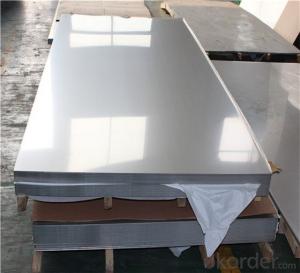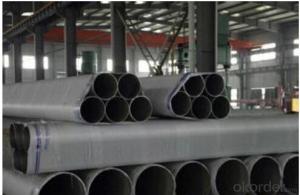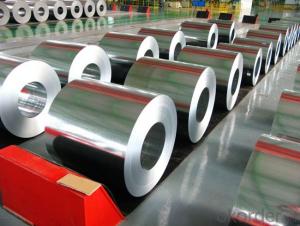Stainless Steel Cabinets Industrial
Stainless Steel Cabinets Industrial Related Searches
Best Paint For Stainless Steel Blanket Insulation For Steel Buildings Primer For Galvanized Steel Foam Filter For Stainless Steel H S Code For Stainless Steel Surface Grinding Wheels For Stainless Steel Surface Grinding Wheels For Hardened Steel Hole Saw For Stainless Steel Paint For Stainless Steel Stainless Steel For BbqHot Searches
Steel Mesh Panels For Sale Price For Stainless Steel Scrap Scrap Price For Stainless Steel Price For Stainless Steel Stainless Steel Tank For Sale Stainless Steel Sheets For Sale Cheap High Tea Sets For Sale Stainless Steel Tanks For Sale Stainless Steel For Sale High Density Fiberboard For Sale Solar Hot Water Collectors For Sale Scaffolding For Sale In Uae Scaffolding For Sale In Ireland Scaffolding For Sale In Houston Type Of Inverter For Solar Price Of Shipping Containers For Sale Types Of Inverter For Solar Stock Price For Aluminum Used Solar Inverter For Sale Steel Mesh Panels For SaleStainless Steel Cabinets Industrial Supplier & Manufacturer from China
Okorder.com is a professional Stainless Steel Cabinets Industrial supplier & manufacturer, offers integrated one-stop services including real-time quoting and online cargo tracking. We are funded by CNBM Group, a Fortune 500 enterprise and the largest Stainless Steel Cabinets Industrial firm in China.Hot Products
FAQ
- Yes, stainless steel pipes are suitable for fire sprinkler systems. They offer excellent corrosion resistance, durability, and strength, making them an ideal choice for such systems. Stainless steel pipes can withstand high temperatures and maintain their structural integrity, ensuring reliable performance in fire emergencies.
- The main difference between seamless and double submerged arc welded stainless steel pipes lies in their production process. Seamless pipes are manufactured without any welding or seams, resulting in a smooth and continuous pipe with uniform strength throughout. On the other hand, double submerged arc welded pipes are created by welding two separate pieces of steel together using the submerged arc welding method. This creates a welded joint along the length of the pipe. While both types of pipes have their own advantages and applications, seamless pipes are generally preferred for their superior strength, durability, and resistance to corrosion.
- What is stainless steel decorative tube? What uses does it have?
- For the steel to withstand the pressure to the hydraulic test to test its ability and quality, leakage, soaked or expansion for qualified does not occur at the prescribed pressure, some steel according to the requirement of standard or edge test, flaring test and flattening test.Seamless stainless steel tube, also called stainless steel seamless pipe, is made of ingot or solid tube blank by piercing, and then made by hot rolling, cold rolling or cold casting. Specifications for seamless steel tubes are expressed in millimeters of outer diameter * wall thickness.
- The main difference between schedule 10 and schedule 160 stainless steel pipes is their thickness and pressure rating. Schedule 10 pipes have a thinner wall thickness and a lower pressure rating compared to schedule 160 pipes, which have a thicker wall thickness and a higher pressure rating. Additionally, schedule 160 pipes are typically used for high-pressure applications, while schedule 10 pipes are suitable for low to medium-pressure applications.
- The specific grade of stainless steel being utilized determines the maximum temperature that can be endured by stainless steel pipes. Generally, stainless steel possesses a reputation for its exceptional resistance to high temperatures and can maintain its structural integrity within a temperature range of -150°C (-238°F) to 1100°C (2012°F). Yet, the precise maximum temperature differs depending on variables including the grade of stainless steel, the intended use, and the length of time exposed to elevated temperatures. To ascertain the maximum temperature limit for a specific stainless steel pipe, it is crucial to refer to the manufacturer's specifications and guidelines.
- There are several different finishes available for stainless steel pipes, each offering its own unique look and level of corrosion resistance. 1. Brushed Finish: This finish is achieved by brushing the surface of the stainless steel pipe with a fine abrasive material, resulting in a dull, textured appearance. It effectively hides scratches and fingerprints, making it a popular choice for applications where aesthetics are important, such as architectural projects. 2. Mirror Finish: Also known as a polished or reflective finish, this is achieved by polishing the surface of the stainless steel pipe to a high shine. It provides a smooth, reflective surface that is easy to clean and is commonly used in decorative applications, such as handrails and furniture. 3. Satin Finish: Similar to the brushed finish, the satin finish is achieved by using a fine abrasive material to create a smooth, dull appearance. It offers a slightly more refined look compared to the brushed finish and is commonly used in applications where corrosion resistance is important, such as in the food and beverage industry. 4. Embossed Finish: This finish involves imprinting a pattern onto the surface of the stainless steel pipe, adding texture and visual interest. It is often used in decorative applications, such as wall panels or elevator interiors. 5. Bead Blasted Finish: This finish is achieved by propelling small glass beads at high pressure onto the surface of the stainless steel pipe. It creates a uniform, matte appearance and is commonly used in architectural applications, as it provides a unique texture and hides fingerprints well. 6. Passivated Finish: Passivation is a chemical process that removes contaminants from the surface of the stainless steel pipe, improving its corrosion resistance. This finish is commonly used in applications where stainless steel pipes are exposed to harsh environments or chemicals. It is important to note that the choice of finish for stainless steel pipes depends on the specific application and aesthetic preferences. Each finish has its own advantages and disadvantages, so it is essential to consider factors such as durability, maintenance, and the intended use of the pipe before making a decision.
- To prevent pitting corrosion in stainless steel pipes, several measures can be taken: 1. Choose the right grade of stainless steel: Not all stainless steels are created equal. Opt for grades with a higher resistance to corrosion, such as 316 or 904L, which contain molybdenum and have better resistance to pitting corrosion. 2. Adequate alloying elements: Ensure that the stainless steel pipe contains the proper amount of alloying elements, such as chromium and molybdenum. These elements form a protective layer on the surface of the steel, making it more resistant to corrosion. 3. Regular cleaning and maintenance: Regularly clean the stainless steel pipes to remove any contaminants or deposits that could lead to pitting corrosion. Avoid using abrasive materials or cleaners that may damage the protective layer of the steel. 4. Avoid exposure to aggressive environments: Limit the exposure of stainless steel pipes to aggressive substances like chloride ions, acidic solutions, or high temperatures, as these can accelerate pitting corrosion. If exposure is unavoidable, consider using protective coatings or linings to create a barrier between the steel and the corrosive environment. 5. Cathodic protection: Implement cathodic protection techniques, such as sacrificial anode systems or impressed current systems, to protect stainless steel pipes. These methods create a potential difference between the stainless steel and a more easily corroded metal, redirecting corrosion away from the stainless steel. 6. Control water chemistry: In applications involving water, monitor and control the water chemistry parameters such as pH, temperature, and chloride levels. Adjusting these factors within acceptable limits can help prevent pitting corrosion in stainless steel pipes. 7. Implement proper design and installation practices: Ensure that stainless steel pipes are designed and installed correctly, considering factors such as avoiding crevices, proper drainage, and avoiding stagnant areas where corrosion can occur. Proper insulation and the use of gaskets or flanges made from compatible materials can also prevent pitting corrosion. By following these preventive measures, you can significantly reduce the risk of pitting corrosion in stainless steel pipes, extending their lifespan and maintaining their structural integrity.
- What is lined with stainless steel?
- Stainless steel lining is a method of trenchless repair of underground pipes.













































